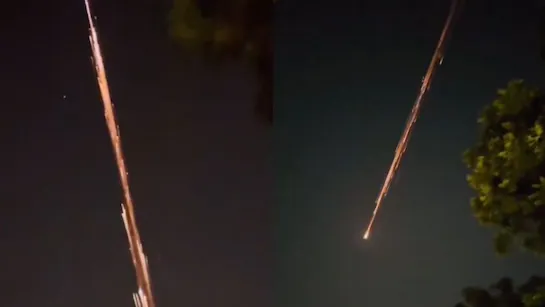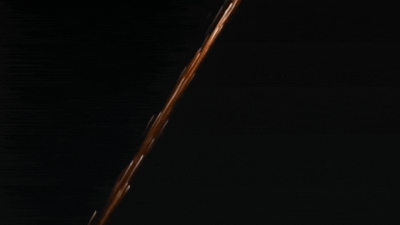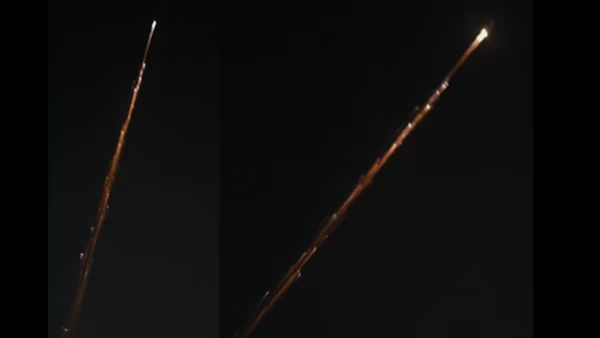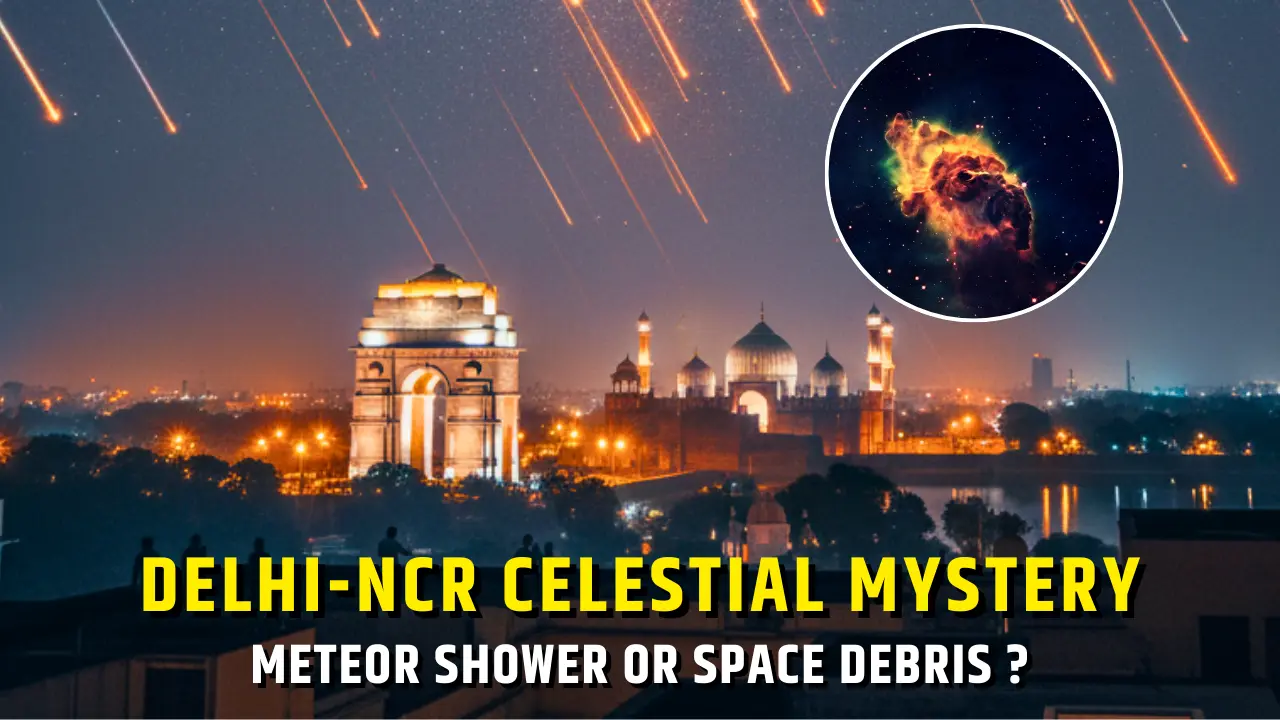In the early hours of Saturday, residents across Delhi, Gurugram, Noida, and Ghaziabad were treated to a breathtaking spectacle. A bright, fiery streak blazed across the night sky, leaving a trail of glowing fragments. Eyewitness accounts and viral videos quickly flooded social media, with everyone asking the same question: was this a meteor shower or space debris? The mystery has left the entire Delhi-NCR region puzzled, captivated by the fleeting celestial event. While some swore it was a natural phenomenon, others were convinced it was man-made space junk returning home.
This event highlights a common confusion between two distinct phenomena. While they may appear similar to the naked eye, the origin and characteristics of a meteor and re-entering space debris are vastly different. Understanding these differences can help us appreciate the wonders of our universe, both natural and artificial.
The Great Debate: Fiery Streak Explained
The sudden appearance of the bright object over such a densely populated area naturally led to intense speculation. Experts and amateur astronomers alike weighed in, presenting compelling arguments for both sides.

Case for a Meteor Shower (or Bolide)
A meteor, often called a “shooting star,” is a piece of cosmic rock or dust that enters Earth’s atmosphere at high speed. The friction with the air causes it to heat up and glow brightly, creating the streak of light we see. A particularly bright meteor is known as a bolide or fireball. These can sometimes be bright enough to be seen in broad daylight and can even be accompanied by a sonic boom.
- Speed: Meteors typically travel at incredible speeds, ranging from 11 km/s to 72 km/s. Their high velocity creates a very brief, intense streak.
- Appearance: They often appear as a single, rapidly moving point of light that might fragment into smaller pieces due to the immense pressure and heat.
- Timing: While major meteor showers are predictable annual events (like the Perseids in August or the Leonids in November), isolated bolide events can happen at any time.
The American Meteor Society (AMS) often tracks and reports on such fireball events. A recent report from the AMS noted that while September is not a peak month for major showers, isolated fireballs can still occur. A bright, fragmenting object like the one seen over Delhi-NCR fits the description of a bolide perfectly.
Case for Re-entering Space Debris
Space debris, or “space junk,” refers to defunct satellites, rocket stages, and other man-made objects orbiting Earth. As these objects lose altitude, they eventually re-enter the atmosphere. Similar to meteors, the friction causes them to burn up, creating a fiery display.
- Speed: Space debris re-enters at a much slower speed than natural meteors, typically around 7-8 km/s. This slower speed means the fiery streak lasts longer and appears more “languid” across the sky.
- Appearance: Re-entering space debris often breaks apart into multiple, glowing fragments in a visible cluster or line. The fragmentation is a key identifier.
- Predictability: The re-entry of large space objects can sometimes be predicted by organizations like the Aerospace Corporation, which tracks thousands of objects in orbit.
In the case of the Delhi-NCR sighting, a prominent theory suggests the streak was debris from a Chinese CZ-3B rocket body. The Aerospace Corporation had previously predicted the re-entry of this specific object. The slow, deliberate movement and visible fragmentation captured in many videos strongly support this theory.

What’s the Verdict?
While no official confirmation has been issued by Indian authorities like ISRO, the scientific consensus leans heavily towards space debris. The key evidence is the slow speed and the distinct fragmentation pattern observed in many videos. While a natural bolide can also fragment, the slow, multi-part trail seen by countless witnesses is a hallmark of a man-made object burning up on its way down.
Also Read: 21 September Surya Grahan: Times & What to Know
This particular event highlights a growing issue: the increasing amount of space debris orbiting our planet. According to the European Space Agency (ESA), there are currently over 36,500 pieces of space debris larger than 10 cm in orbit, and this number is constantly rising. This poses a significant threat to active satellites and future space missions.
The Role of Citizen Scientists
The widespread use of smartphones has transformed how such events are documented. In the past, a brief celestial event might have been a story passed by word of mouth. Today, a flurry of videos from different angles and locations provides invaluable data for experts.
Also Read: Nehru Planetarium Delhi: Timings, Ticket Price, Parking and Nearest Metro Station
This collective effort, driven by curiosity and technology, provides a rich tapestry of information that helps solve cosmic puzzles.
How to Tell the Difference Next Time

So, the next time you see a fiery streak in the sky, how can you determine if it’s a meteor or space debris?
- Check the Speed: Is it a fleeting flash or a slower, more prolonged light show? Meteors are typically very fast.
- Look for Fragmentation: Does the object break into multiple, glowing pieces? This is a strong indicator of space debris.
- Listen for a Sound: A bolide (very bright meteor) might be followed by a sonic boom, although this is rare.
- Look it Up: Check reputable sources like the American Meteor Society or the Aerospace Corporation for any recent reports of fireballs or planned re-entries.
A Reminder of Our Cosmic Connection
Whether it was a natural bolide or re-entering space junk, the fiery streak that captivated Delhi-NCR was a powerful reminder of our connection to the cosmos. It sparked curiosity, brought people together online, and provided a moment of awe in the midst of our busy urban lives. As we continue to launch more satellites and explore space, events like this may become more common.
Being informed and aware of what’s happening above us is the first step in appreciating the cosmic dance that plays out every night, high above our heads.

















